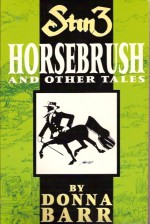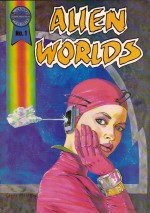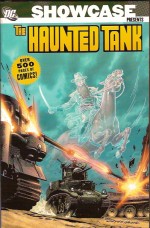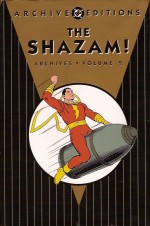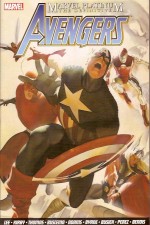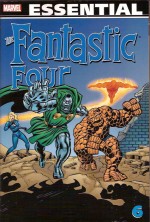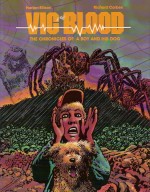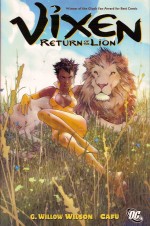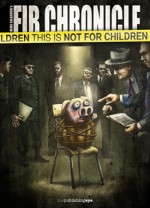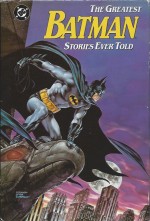
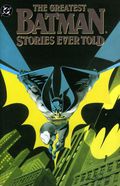
By Bob Kane, Bill Finger & various (DC Comics)
ISBN: hc 0930-289-35-8Â Â Â Â Â Â Â pb 978-0-93028-966-9
When the very concept and feasibility of high priced graphic novels was just being tested in the early 1990s, DC Comics produced a line of glorious hardback compilations spotlighting star characters and celebrating standout stories from the company’s illustrious and varied history decade by decade. They even produced themed collections which shaped the output of the industry to this day such as this captivating compendium of tales released in 1988 designed to promote interest in the then still-forthcoming Batman movie.
As one of the earliest graphic novel collections of the time the accreditations in this tome are sometimes incorrect and I’ve endeavoured to correct any inaccuracies I’ve spotted wherever they occur…
The non-stop rollercoaster ride begins with ‘Batman versus the Vampire parts 1 and 2’ which originally appeared in Detective Comics #31-32 (September and October 1939 by Gardner Fox & Bob Kane), a sublime two-part gothic shocker which introduced the first bat-plane, Bruce Wayne’s girlfriend Julie Madison and vampiric horror The Monk: a saga which concluded in an epic chase across Eastern Europe and a spectacularly chilling climax. The tale was re-imagined by Matt Wagner in 2007 as Batman and the Mad Monk.
From Batman #1, 1940 ‘Dr. Hugo Strange and the Mutant Monsters’ follows as a brilliant old enemy (see Batman Archives volume 1) returned with laboratory-grown hyperthyroid horrors to rampage through the terrified city. Bill Finger, Kane & Jerry Robinson’s pulp masterpiece was also later reworked by Wagner as Batman & the Monster Men.
‘Nights of Knavery’ from Batman #25 (October/November 1944, Don Cameron, Hardin “Jack†Jack Burnley & Jerry Robinson) saw the Joker and Penguin temporarily united in a tempestuous and foredoomed alliance against the Dynamic Duo after which the Wily Old Bird starred in a solo saga from the Sunday section of the short-lived Batman syndicated newspaper strip.
‘1001 Umbrellas of the Penguin’ (from February 10th – March 10th 1946, by Alvin Schwartz, Burnley & Charles Paris) recounted a hilarious episode wherein the arch-criminal’s formidable Aunt Miranda came to visit, blithely unaware of her nephew’s nefarious career, after which ‘The Origin of Batman’ (#47 of his solo title, June 1948, by Finger, Kane & Paris) added tone and depth to the traumatic event when The Gotham Gangbuster at last confronted the triggerman who murdered his parents…
A new high-tech, gadget-fuelled era opened with ‘The Birth of Batplane II’ (Batman #61, October 1950: David Vern, Dick Sprang & Paris) as the Dynamic Duo lost their old aircraft to criminal aviators and constructed a whole new look for themselves…
After WWII Robin had a long-running solo-strip in Star-Spangled Comics and from #124 (January 1952) comes ‘Operation Escape’ by an unknown writer – possibly Bill Finger – and artist Jim Mooney wherein the Boy Wonder proved his ingenuity in liberating himself from an impossible criminal trap, whilst in ‘The Jungle Cat-Queen’ (Detective #211 September 1954, by Edmond Hamilton, Sprang & Paris) he and his mentor were hard-pressed to outwit the sultry Catwoman after she marooned them on a tropical island rife with deadly killers, animal and human…
‘The First Batman’ (Detective Comics #235, September 1955) was a key story of this period and introduced a strong psychological component to Batman’s origins courtesy of Finger, Sheldon Moldoff & Stan Kaye, disclosing how when Bruce Wayne was still a toddler his father had clashed with gangsters whilst clad in a fancy dress bat costume…
When the Man of Tomorrow replaced the Caped Crusader with a new partner in World’s Finest Comics #94 (1958) it led to a timely review and partial revision of ‘The Origin of the Superman-Batman Team’ in a timeless tale by Hamilton, Sprang & Stan Kaye after which ‘Robin Dies at Dawn’ re-presents the eerie epic which first appeared in Batman #156 (June 1963, Finger, Moldoff & Paris) wherein the Gotham Guardian experienced truly hideous travails on an alien world culminating in the death of his young partner.
Detective #345 (November 1966) introduced a terrifying, tragic new villain in ‘The Blockbuster Invasion of Gotham City!’ (Fox, Infantino & Giella) as a monstrous giant with the mind of a child and the raw, physical power of a tank was constantly driven to madness at sight of Batman and only placated by the sight of Bruce Wayne…
This is followed by a chilling murder-mystery from the most celebrated creative team of the 1970s. ‘Ghost of the Killer Skies’ (Detective Comics #404, October 1970, by Denny O’Neil, Neal Adams & Dick Giordano) found Batman attempting to solve a series of impossible murders on the set of a film about German WWI fighter ace Hans von Hammer and the same team are responsible for the moody masterpiece which follows, reintroducing one of Batman’s most tragic and dangerous foes.
As comics became increasingly more anodyne in the 1950s the actualised schizophrenic Two-Face had faded from view, but with the return of a grimmer, grittier hero the scene was set for a revival of Batman’s most murderously warped villains too. ‘Half an Evil’ from Batman #234, August 1971 is a spectacular action-packed mystery, as the long-gone two-in-one man perpetrated a series of bizarre events for no perceptible purpose…
‘Man-Bat Over Vegas’ (Detective #429, November 1972, written and illustrated by Frank Robbins) was an epilogue to the triptych of tales which introduced the tragic Kirk Langstrom, whose experiments doomed him to life as a monstrous winged mutant. Although Batman assumed the scientist was cured, when a nuclear test led to a rash of vampire attacks in Nevada the Caped Crusader rushed west to investigate…
‘The Batman Nobody Knows’ comes from Batman #250, July 1973 and was a celebrated attempt by Robbins & Giordano to rationalize the then newly-restored aura of mystery to the character. This quirky campfire tale recently inspired the creation of African Dark Knight Batwing as part of DC’s “New 52â€â€¦
When Archie Goodwin took over the editor’s desk from Julie Schwartz in Detective Comics #437 (November 1973) he also wrote a stunning run of experimental yarns, beginning with ‘Deathmask’: a brilliant supernatural murder-mystery featuring an Aztec curse; magnificently depicted by Jim Aparo. From #442 (September 1974) ‘Death Flies the Haunted Sky’ provided reclusive graphic genius Alex Toth with an opportunity to show everybody how powerful comic art could be.
Goodwin & Toth’s collaboration on the magnificent barnstorming murder-spree thriller is one of the best Batman tales ever created.
Next up is ‘There is no Hope in Crime Alley!’ (Detective Comics #457, March 1976): a powerful and genuinely moving tale which introduced Leslie Thompkins, the woman who first cared for the boy Bruce Wayne on the night his parents were murdered, delivered with great skill and sensitivity by O’Neil & Giordano.
‘Death Strikes at Midnight and Three’ comes from DC Special Series #15 (Summer, 1978): an ambitious but not quite successful text-thriller which married a wealth of superb illustrations by Marshall Rogers to O’Neil’s surprisingly lacklustre prose.
Rogers had first come to prominence drawing Steve Englehart’s classic reinterpretation of the Batman legend and ‘The Deadshot Ricochet’ (Detective #474, December 1977, and with Terry Austin on inks) was perhaps the best of a truly stellar run. The second ever appearance of the murderous high society sniper (after an initial outing in Batman #59, 1950) so reinvigorated the third-rate trick-shooter that he’s seldom been missing from the DC Universe since, starring in a number of series such as Suicide Squad and Secret Six, and even in a couple of eponymous miniseries.
‘Bat-Mite’s New York Adventure’ from Detective 482 (March 1979) is a hilarious fourth-wall busting romp by Bob Rozakis, Michael Golden & Bob Smith which finds the geeky fifth-dimensional sprite invading the offices of DC comics to deliver a protest in person, whilst its back to grim business as usual in the bombastic ‘A Caper a Day Keeps the Batman at Bay’ (Batman #312, June 1979, by Len Wein, Walt Simonson & Giordano) as the obsessed bandit Calendar Man attempts to commit a themed robbery every 24 hours…
In Detective #500 (March 1981) Alan Brennert & Giordano sent Batman and Robin to another Earth to prevent the murder of Thomas and Martha Wayne in the beguiling ‘To Kill a Legend’ and the story-portion of this book concludes with another Brennert alternate world saga as in 1955 the Earth-2 Batman and Catwoman clashed with the Scarecrow before finally sheathing their claws and getting married in ‘The Autobiography of Bruce Wayne’ (The Brave and the Bold #197 April 1983) illustrated by Joe Staton & George Freeman.
The hardcover book is edited by Mike Gold, Brian Augustyn, Mark Waid & Robert Greenberger, with a spectacular collage of covers as endpaper illustrations, ‘Growing up with the Greatest’ – an introduction from Dick Giordano, and text features ‘Our Darkest Knight’ from Gold and a captivating end-note article by Greenberger. Also on show are copious creator biographies liberally enhanced with even more tantalising cover reproductions, even filling up all those half-page breaks which advertised new comics in the originals.
I defy any nostalgia-soaked fan not to start muttering “got; got; need it; Mother threw it away…â€
This unbelievably enchanting collection was released in both hardcover and paperback editions and is a pure parcel of superhero magnificence: fun-filled, action-packed and utterly addictive.
© 1939-1983, 1988 DC Comics Inc. All Rights Reserved.

